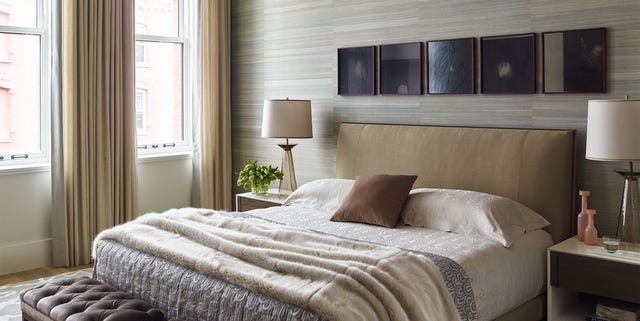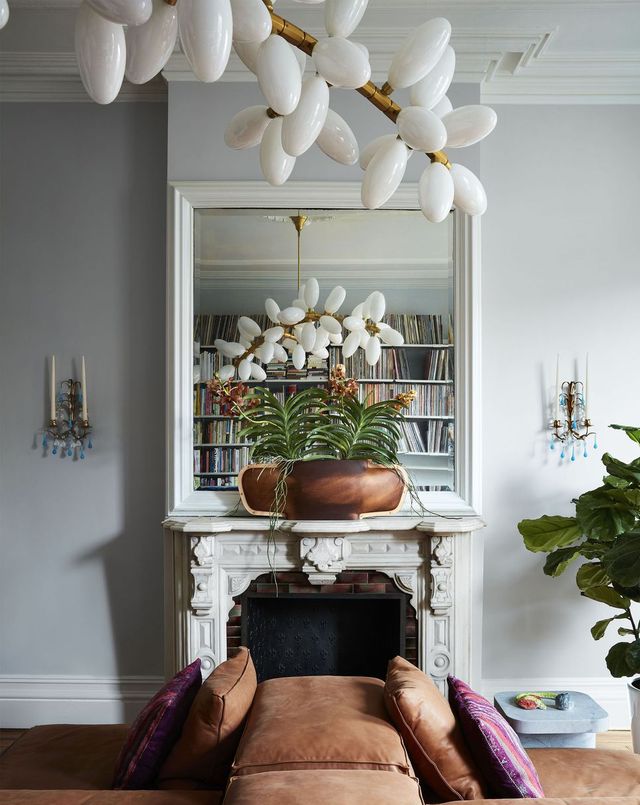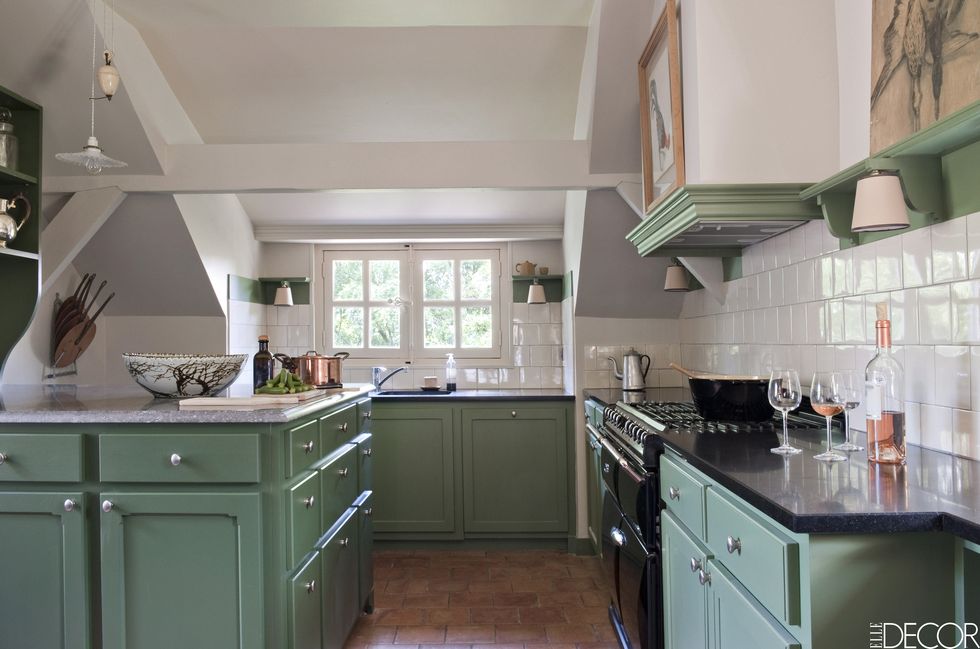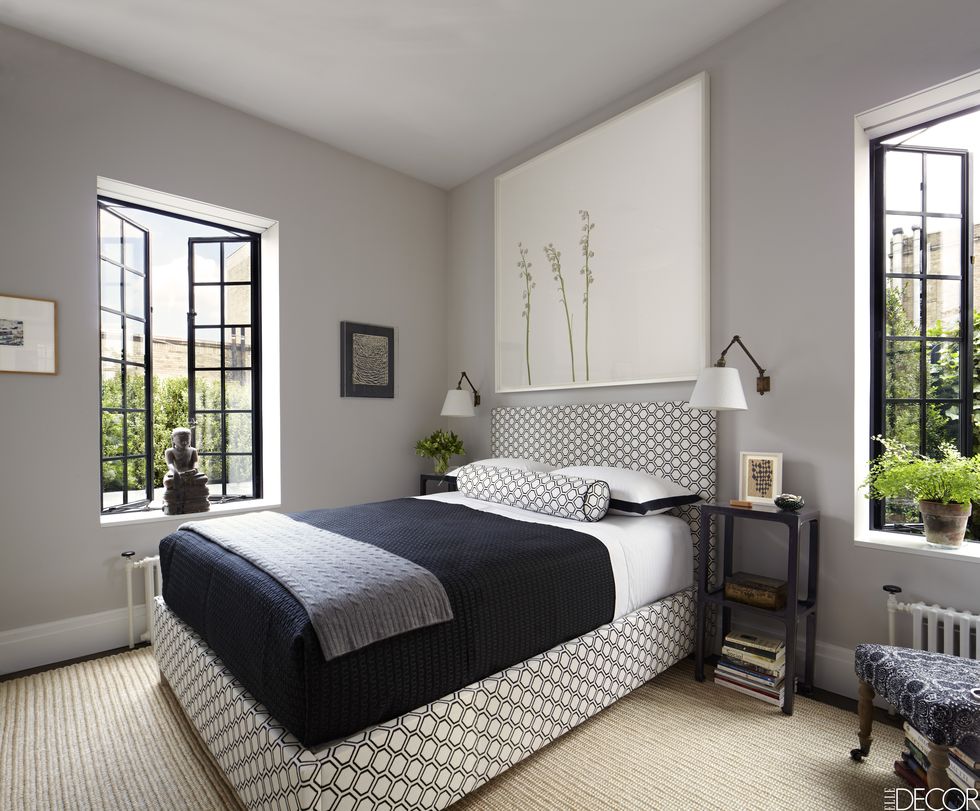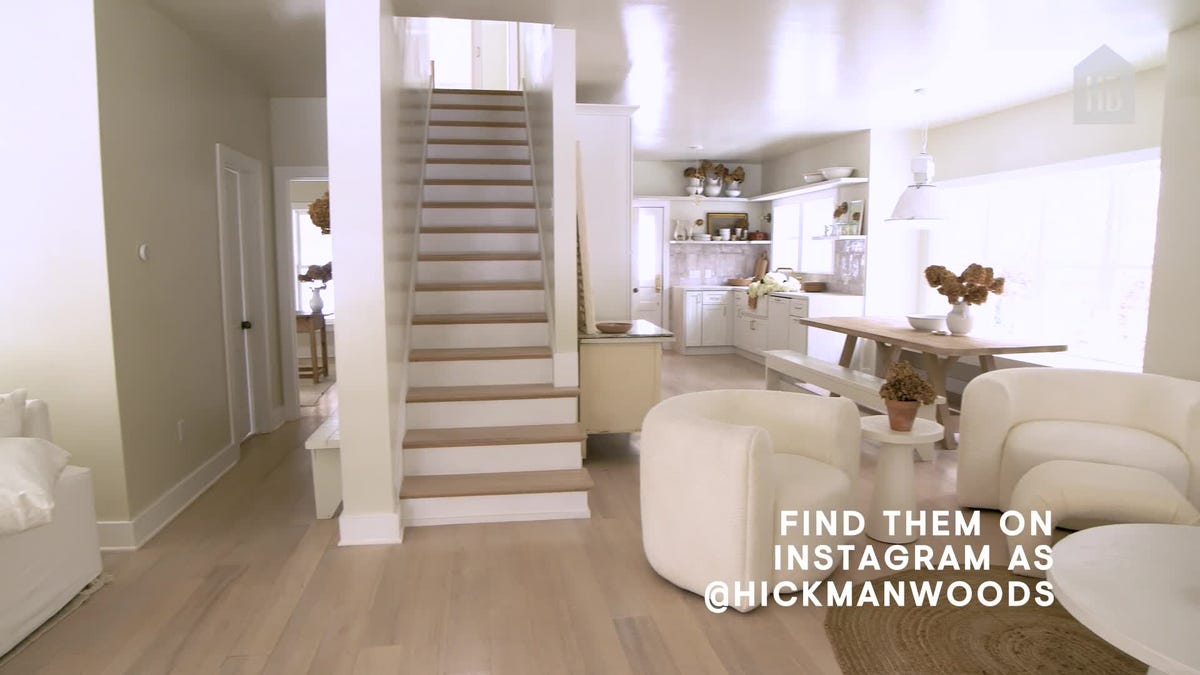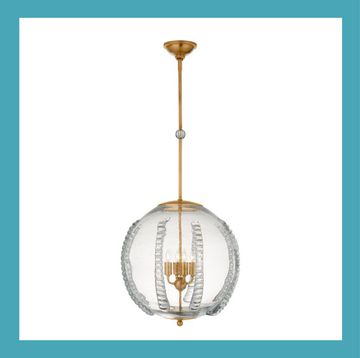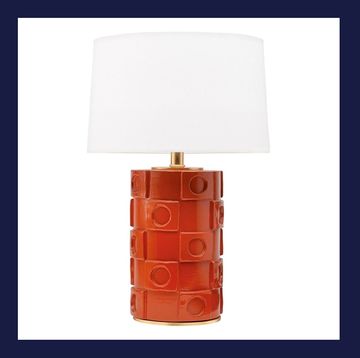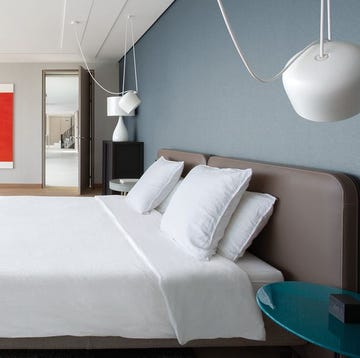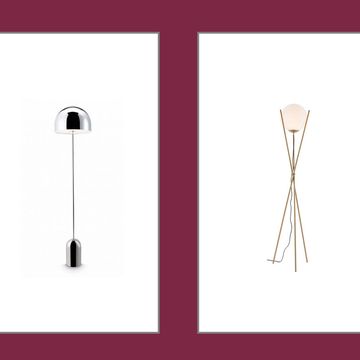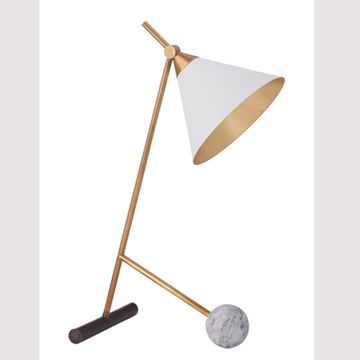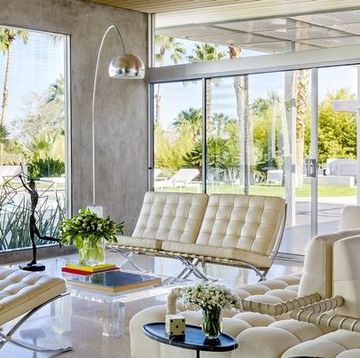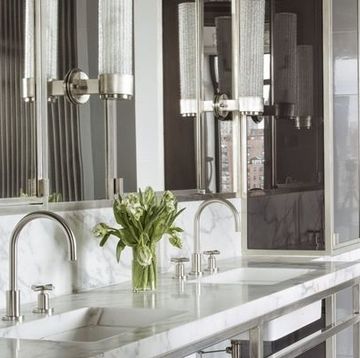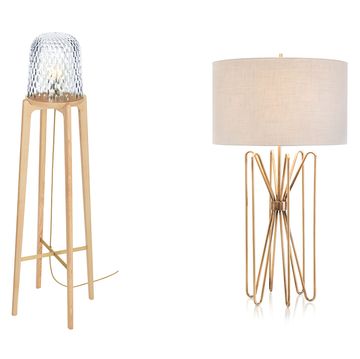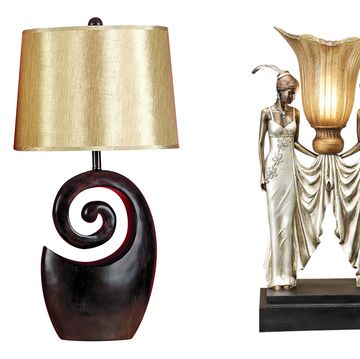Apartment dwellers understand the challenge of choosing light fixtures that address issues like a lack of natural light and minimal floor space. To transform your dreary apartment into a well-lit abode, see these expert tips on how to choose the best lighting for your space.
1. Aim High With Eye-Catching Ceiling Fixtures
Incorporating a bold ceiling fixture will direct attention upward and open up your space. "A large, even over-scale ceiling fixture can add illumination and drama, and also trick the eye into thinking the space is much larger than it actually is," say interior designer and Lamps Plus trends producer Michael Murphy.
That doesn't mean you should totally nix all other lighting sources, though. Ceiling fixtures don't usually work as standalones if you're already lacking in natural light.
"Ceiling lights can brighten a whole room, but only with other lighting sources. A single ceiling fixture used as the only light source is heinous and does nothing to enhance your room," says Sid Pinkerton, owner of Manhattan Staging.
2. Consider Sconces and Overhead Lighting for a Powder Room
Choosing lighting for a powder room can be tricky, but Michael Amato, creative director of The Urban Electric Co., recommends slim sconces for the space.
"One problem with small spaces, especially in tiny powder rooms, is lighting around the vanity," says Amato. "When there is only a skinny patch of wall, the mistake is forgoing a sconce altogether and only having overhead lighting, which can be harsh and overpowering, making the space feel even smaller. Incorporating a sconce with overhead lighting, lamps and natural light can bring balance to the space and make it open and inviting."
3. Choose Your Lampshades Wisely (Or Nix Them Altogether)
Lampshades, if you use them at all, aren't just decorative accents — they actually make a big difference in the quality of light you get out of your lamp. Therefore, it's important know what your lighting goal is when choosing a shade.
"Lighter lamp shades will allow more light out into the room, while darker shades will make the light more localized and shine above and below the fixture," says Pinkerton.
Don't be afraid to forego traditional lampshades, however. If your end goal is a room flooded with light, Murphy suggests ditching traditional shades altogether, and instead choosing lights with glass or mesh shades, or opting for Edison-style lighting where bulbs are left exposed.
4. Warm Up To Incandescent Light
The lighting in your home should make your space feel inviting — not like you're sitting in a cold waiting room. To accomplish that, interior designer Marie Burgos suggests sticking with bulbs that emit a softer, yellow light.
"It's more relaxing and sends signals to your body to relax for better sleep at night," says Burgos.
That's because blue light can suppress melatonin, which promotes sleep. Think Apple's new "Night Shift" mode for the iPhone, for example, which makes your iPhone's light warmer after dark.
To get that soft, yellow light, you'll want to look for incandescent bulbs, Murphy says, which are lower on the Kelvin scale than other lights.
5. Don't Forget Task Lighting
When choosing light fixtures, it's important to not only consider the overall brightness in the room, but also to think about the areas of your home where you'll need focused light for a task, like reading at a desk. Task lighting is especially useful in apartment kitchens. "Under-cabinet lighting will give you all the light you need to see the tasks at hand on counters," says Pinkerton.
6. Put A Mirror, Mirror On The Wall
You already know that mirrors can help make a room appear larger, but Murphy also suggests placing mirrors directly across from windows to help bounce light around the room and maximize what's already there. "It'll provide the illusion that there are more windows than you really have."
7. Go Vertical With Floor Lamps
When you're short on square footage, take advantage of height instead. Torchiere floor lamps are ideal for apartments lacking in area because they provide plenty of light without taking up much needed floor or tabletop space. Murphy suggests choosing a lamp that multitasks — meaning it has a torchiere top and a task light midway up — to get the most out of your fixture.
Tall floor lamps are also ideal for the narrow corners of a room that are often overlooked, but shouldn't be. "Placing a floor lamp or table lamp can help disperse light in the room and provide illumination in the otherwise dim nooks and crannies," says Murphy.
8. Take Advantage Of Wall Space
Another way to work with a lack of square footage? Avoid taking up valuable floor space altogether and utilize your walls with mounted fixtures like sconces, which can be as eye-catching as any art piece. "Sconces as bedside lighting save space on crowded bedside tables and are a beautiful surprise," says interior designer Amanda Nisbet.
9. Stay In Control With Dimmers
Dimmers are the only way to truly have flexible lighting in your home. Pinkerton suggests incorporating dimmer switches wherever possible, and choosing lamps that have either high/low switches or 3-way bulbs.
Using dimmers can also instantly change the mood of a room. "They regulate light intensity for a more intimate ambiance," says Burgos.
10. Think About Form And Function
Function is key when choosing lighting for your apartment, but don't overlook the importance of how your lights tie in with your overall aesthetic for a seamless look. "Treat your lighting like a piece of furniture," Burgos suggests. "You can have different material finishes like metal, glass, wood, or concrete, for example, which would tie your light fixture to your look."
Monique Valeris is the home design director for Good Housekeeping, where she oversees the brand's home decorating coverage across print and digital. Prior to joining GH in 2020, she was the digital editor at Elle Decor. In her current role, she explores everything from design trends and home tours to lifestyle product recommendations, including writing her monthly column, "What's in My Cart."
